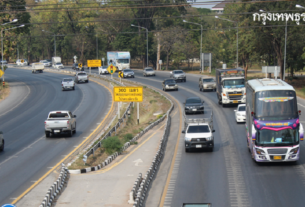Creveling & Creveling protects its client’s privacy. The following is a fictitious example designed to demonstrate the type of financial decision-making required to achieve financial security and does not refer to any specific case.
The Situation:
John is a single American expatriate, age 45, living and working in Thailand. Until recently, he hasn’t been in a position to save and has only accumulated $100,000 for retirement. Now that he can save, he wants to know how much he’ll need in order to retire safely and to avoid the risk that he’ll run out of money before he dies. He’s not sure where he will retire, but would like to have the flexibility to return to a higher-cost location, such as the U.S., if needed.
The Approach:
For many expats, the proverbial million dollar (or even multi-million dollar) question is how much is needed for retirement. Of course, without a crystal ball, there’s no way of knowing for sure. But in making a few educated estimates and calculations, you can come up with some ballpark estimates of how much you should be saving and investing for your retirement. In John’s case, here are some of the things that he’ll need to consider:
- How much he plans to spend annually in retirement
- How many years he’ll be retired
- How much he can save each year before retirement
What John Estimates:
How much will he spend annually in retirement? This can be a hard number to pin down, especially as retirement is many years away and John is not sure where in the world he’ll end up. John can start by calculating what it costs to maintain his current lifestyle. He’ll need to add all costs that he’ll pay for in retirement, even those that may currently be paid by his employer (in John’s case housing, healthcare, transportation, and some international travel). Then he should calculate an alternative location, preferably one at the opposite end of the spectrum in terms of cost. John calculates that his current lifestyle costs THB 1.5 million (USD 50,000) in current costs in Thailand, and could cost up to USD 70,000 in current costs if he were to retire in the United States and maintain his current lifestyle.
How many years will John be in retirement? As a nonsmoker, Johnโ€s life expectancy is 84. But before using 84 as a basis for his calculation, John needs to remember that he has a 50% chance of living longer than his life expectancy. Unless he wants to run a 50% chance of running out of funds, he’ll need to plan that he may live longer. As he’s in good health, physically fit, and has access to good-quality medical care, John decides to use a target age of 90 years. This, combined with his target retirement age of 65, means that John wants to fund at least 25 years in retirement from his savings.
How much can he save each year? John’s current after-tax salary and benefits total THB 3 million (USD 100,000). Since his lifestyle costs half that, he estimates he can save the equivalent of USD 50,000 per year for retirement in current dollars. He plans to invest his savings in a low-cost, moderately aggressive investment portfolio (30% fixed income and 70% equity and alternative investments) made up of ETFs and index funds.
Is It Enough?
If John is able to stick to his plan and saves and invests diligently as described over the next 20 years, after adjusting for ETF and index fund fees, he might earn on average a pretax nominal return of 9% per year (or 4.5% real rate of return after inflation). Assuming his savings can earn this percentage year-in and year-out until he retires at age 65, his retirement portfolio would be worth about $3.4 million in future U.S. dollars. Meanwhile, using a long-term inflation estimate of 4.5% per year, he estimates that his living expenses of USD 70,000 will have inflated to about USD 165,000 in future dollars when he retires.
At first glance, USD 3.4 million would seem to be enough to cover Johnโ€s retirement living expenses. For example, even if John switches his portfolio to a lower risk allocation in retirement, and considering that he’ll be paying U.S. tax on his investment earnings and that his expenses will continue to grow with inflation, a spreadsheet calculation suggests that John would have USD 1.2 million leftover when his plan ends at age 90. Since he doesn’t plan to leave an inheritance to anyone, it even looks like he’ll have a good safety margin.
But what if something unexpected happens? Unfortunately, the world does not operate like a spreadsheet, something unexpected always happens. Most importantly, investment returns are not smooth. Volatile investment markets will result in a lower effective rate of return than the simple average used in Excel. Additionally, If John is unlucky a number of other things could go wrong: The markets may do worse than average over the next 20 years, he may end up retiring in a bad year (such as 2008) when markets are down, or perhaps he simply won’t save as much as expected. His expenses could be higher than expected for items such as healthcare. There’s also a reasonable chance that he could simply outlive his money. For example, 30% of the nonsmoking male population is expected to live past age 90. In fact, after stress testing John’s specific situation under a variety of market conditions, his chances of running out of money before he dies are more than 50%.
Some Possible Solutions
Saving more than USD 50,000 per year at this point may be difficult for John, since he’s already earmarking half his salary and benefits. But there are other ways that John can improve his chances of not running out of money in retirement. Some of the areas that are worth looking into include:
- Working longer/saving more. If John works another five years and retires at age 70, he would considerably improve his chances of not running out of money. Those additional years of adding to instead of subtracting from his portfolio make a substantial difference his safety margin improves dramatically. If he retires at 70, his chances of running out of funds even spending USD 70,000 per year in current dollars are low.
- Cutting his expected costs by retiring in a low cost place. John calculates that his current lifestyle in Thailand costs USD 50,000 significantly less than the same lifestyle might cost back in the U.S. Closer to retirement, he may want to re-evaluate whether retiring in a lower cost place such as Thailand could make sense. But even here he needs to be careful: despite all the retire overseas articles that flood the Internet, this decision is not a no-brainer. Higher local inflation in current low-cost places like Thailand may make them more costly during his retirement, and one of John’s likely major expenses in retirement – healthcare may not be insurable outside the U.S. Much can change over the next 20 years, and John will want to re-evaluate his options closer to retirement.
- Contributing to tax-deferred or tax-free investment accounts. Depending on his situation, as a U.S. taxpayer John may be able to make his investment portfolio last longer by shielding some of his investment returns from U.S. tax by making annual contributions to an Individual Retirement Account (IRA) or Roth IRA. To decide whether this is an option for him, he’ll first have to calculate whether he qualifies to contribute. If he does qualify, he should analyze whether he’s likely to be better off over the long-run making contributions to these types of accounts.
- Consider purchasing an inexpensive immediate fixed annuity in retirement. Annuities are sold by insurance companies. For a lump sum, the purchaser can buy a future cash flow stream that will end at their death. John will need to be careful in considering this option. An immediate fixed annuity indexed to inflation and purchased in retirement from a low-cost provider such as Vanguard or Fidelity may be one way to boost his retirement income. However, purchasing an expensive variable annuity sold in the offshore market today should be avoided for a number of reasons including high costs and poor transparency, as well as U.S. tax issues. The decision to buy an immediate fixed annuity should be made closer to retirement, and John will want to carefully consider his situation and whatโ€s on the market at that time.
In conclusion, the above case study is intended to illustrate the type of analysis and decision-making that goes into retirement financial planning. While John has waited until relatively late to start saving, if he is clear about what is achievable and can create and conscientiously implement a realistic savings and investment plan, he will be well on the way toward achieving his goals.
About Creveling & Creveling
Creveling & Creveling is a private wealth advisory firm specializing in helping expatriates living in Thailand and throughout Southeast Asia build and preserve their wealth. Through a unique, integrated consulting approach, Creveling & Creveling is dedicated to helping clients cut through the financial intricacies of expat life, make better decisions with their money, and take the steps necessary to provide a more secure future.
For more information visit www.crevelingandcreveling.com.


